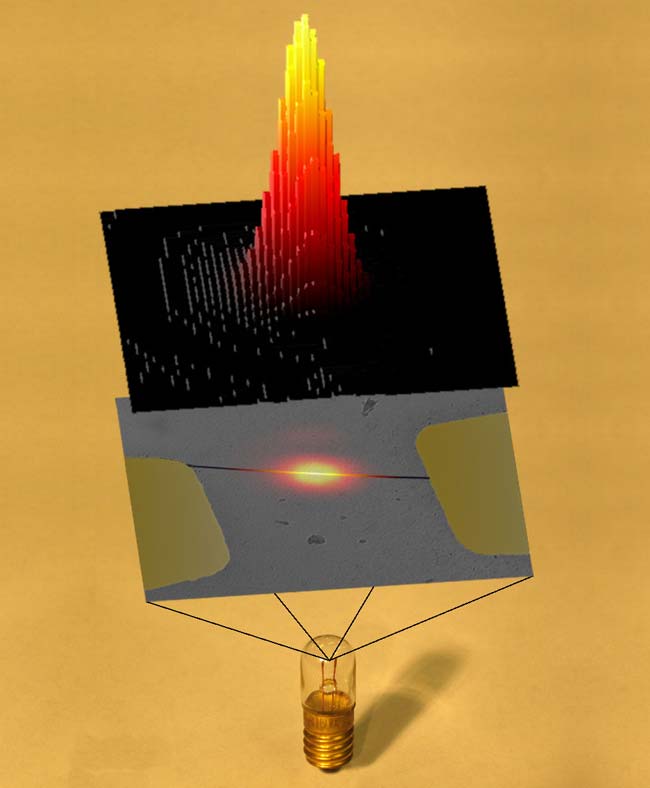World's Smallest Light Bulb Created

Some bright researchers say they've created the world's smallest incandescent lamp, so teeny it's invisible except when lit.
The lamp's filament is just 100 atoms wide. It is made from a single carbon nanotube.
When lit, the itty bitty bulb can be seen with the unaided eye as a point of light, the scientists say.
Thomas Edison's light bulbs also used carbon filaments. But the new filament, created at UCLA, is 100,000 times narrower and 10,000 times shorter than those made by Edison.
But why?
The breakthrough comes at a time when inventors are moving away from incandescents, even looking beyond the green-leaning compact fluorescent bulbs (CFLs), and trying to figure out how to make LED lights cheap enough to take over the job of lighting homes and offices.
So why does this miniscule feat matter?
Get the world’s most fascinating discoveries delivered straight to your inbox.
The filament is big enough to apply the statistical assumptions of thermodynamics, which are longstanding rules about how stuff works when lots of particles are involved, the researchers explained. Yet it is also small enough to be considered molecular, meaning the laws of quantum mechanics — involving very few particles — apply.
Big picture
In lay terms, the invention is aimed at helping the scientists better understand how the physics of large things and the physics of invisible things are, perhaps, related. Or, as they put it:
"Our goal is to understand how Planck's law gets modified at small length scales," said Chris Regan, assistant professor of physics and astronomy at the university. "Because both the topic (black-body radiation) and the size scale (nano) are on the boundary between the two theories, we think this is a very promising system to explore."
If no lights went on for you there, be comforted by the thought that all this bears on the hoped-for "theory of everything" that, if discovered, would help explain gravity and how the universe works and also probably put a lot of physicists out of work.
The work, funded by the National Science Foundation, is explained in the May 5 in the online edition of the journal Physical Review Letters.
- Top Ten Disruptive Technologies
- 10 Technologies That Will Transform Your Life
- Quiz: Great Inventions
Robert Roy Britt is the Editorial Director of Imaginova. In this column, The Water Cooler, he looks at what people are talking about in the world of science and beyond.
Robert is an independent health and science journalist and writer based in Phoenix, Arizona. He is a former editor-in-chief of Live Science with over 20 years of experience as a reporter and editor. He has worked on websites such as Space.com and Tom's Guide, and is a contributor on Medium, covering how we age and how to optimize the mind and body through time. He has a journalism degree from Humboldt State University in California.



